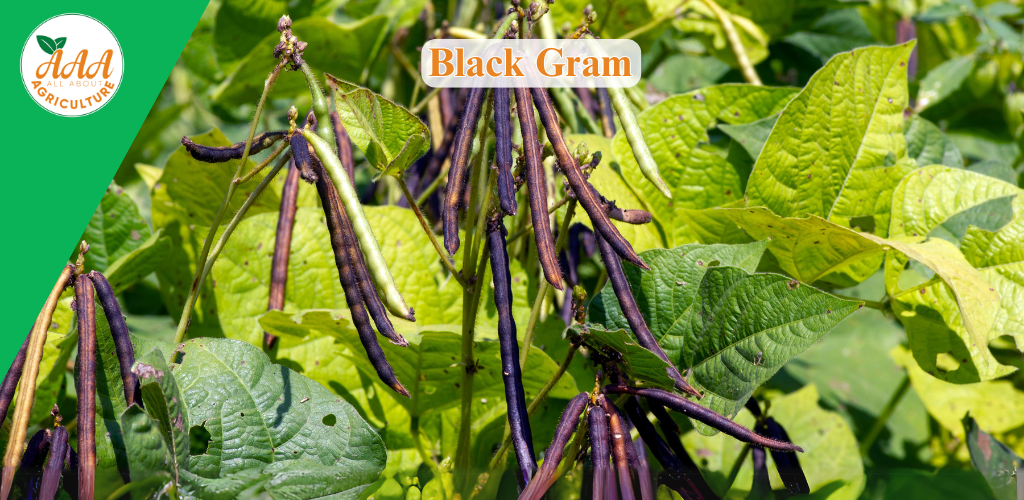Black Gram Production Technology
Black Gram Production Technology

Black gram (Vigna mungo), also known as Urad Dal, is a high-protein, nitrogen-fixing legume that plays a crucial role in sustainable farming. With modern production techniques and scientific management, farmers can achieve higher yields, better quality, and improved profitability.
Key Steps for Profitable Black Gram Cultivation
Ideal Climate & Soil Conditions
Temperature: 25-35°C – Requires warm and dry conditions
Soil Type: Well-drained sandy loam to clay loam soil (pH 6.0-7.5)
Water Requirement: Drought-tolerant, but needs light irrigation at key stages
High-Yielding Black Gram Varieties
Popular varieties: T 9, PU 31, Pant U 19, CO 5, LBG 20
Disease-resistant types: IPU 2-43, UG 218 – Best for areas prone to disease outbreaks
Short-duration varieties: Suitable for multiple cropping systems
Smart Sowing & Seed Treatment
Seed rate: 15-20 kg/ha for line sowing, 25-30 kg/ha for broadcasting
Best sowing time:
✔ Kharif (Monsoon crop): June-July
✔ Rabi (Winter crop): October-November
✔ Zaid (Summer crop): February-March
Seed treatment: Treat with Rhizobium & PSB (Phosphate Solubilizing Bacteria) to enhance nitrogen fixation and root development
Nutrient & Water Management
Balanced fertilization:
- Nitrogen (N): 20-25 kg/ha
- Phosphorus (P): 40-50 kg/ha
- Potassium (K): 20-30 kg/ha
Irrigation schedule: Key stages – Flowering & pod formation
Weed, Pest & Disease Control
Weed management: Use Pendimethalin (pre-emergence herbicide) for weed-free fields
Common pests: Aphids, whiteflies, pod borers – Managed using Neem-based bio-pesticides
Disease control: Yellow Mosaic Virus (YMV), Powdery mildew – Prevent with resistant varieties & fungicides
Harvesting & Post-Harvest Management
Harvest when pods turn dark & moisture content drops below 14%
Proper drying ensures longer shelf life & higher market value
Average yield: 1.2-1.8 tons per hectare.